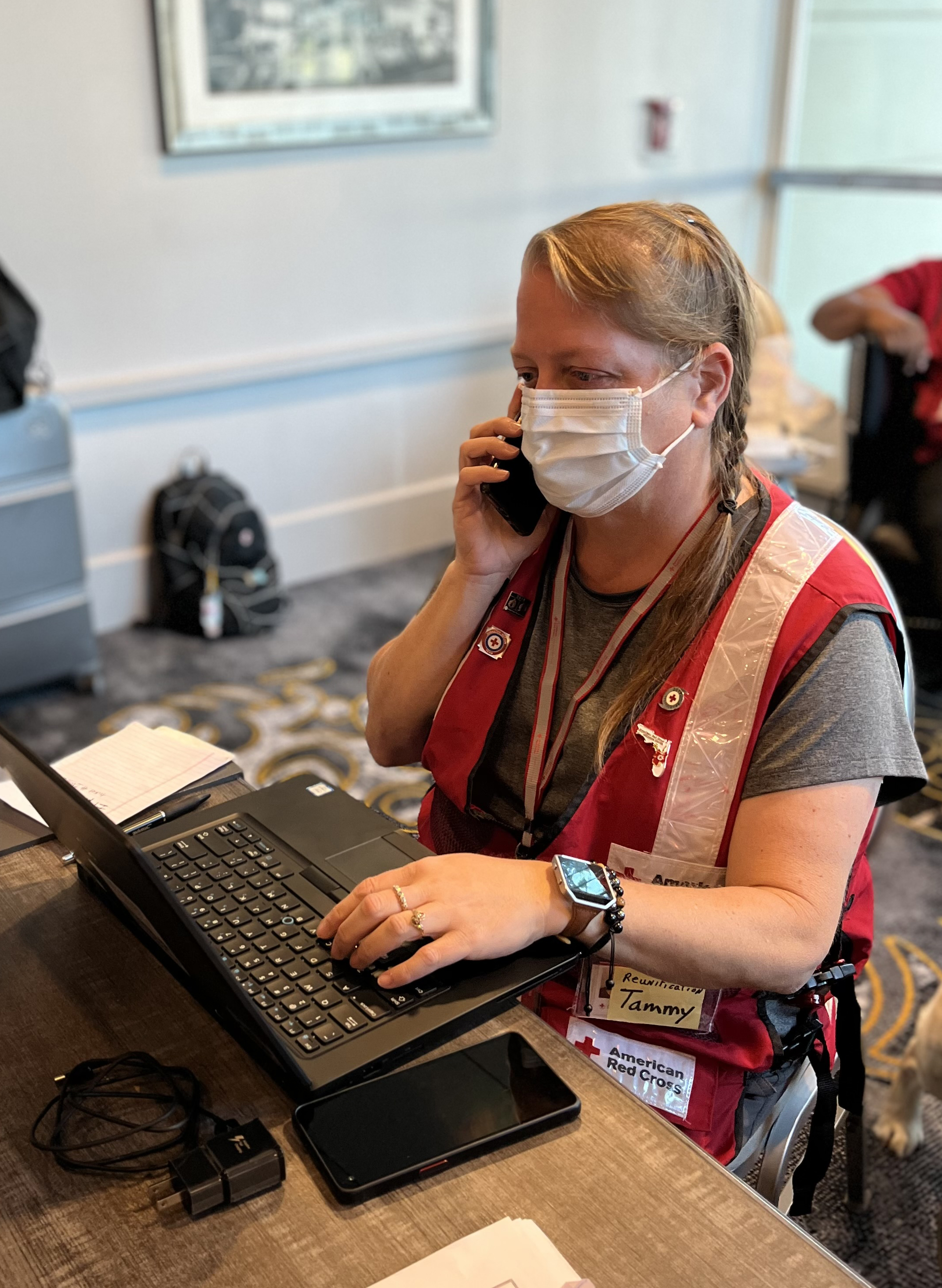The call comes in, and Tammy Miner and the Reunification Team get to work. They begin with an interview of the missing person’s family. Where do the missing persons live? When did you last hear from them? More questions follow: Do they know their neighbors? Do they attend a house of worship? Are they part of an organization such as Knights of Columbus? Are there places they like to frequent?
In this case, the parents had recently bought a home in Rotonda West, a golf community on the coast in central Florida. The son did not know the neighbors’ names, and a call to the golf clubhouse did not yield a connection. But Tammy and her supervisor, Monica Bunner, spotted a lead in their interview – the missing couple had just bought a home. A search of public records yielded the name of the realtor. On a hunch that the realtor lived in the area or perhaps remained in contact with the couple, Monica called the realtor. The realtor not only lived within driving distance, but he was also willing to drive to the couple’s home.
The realtor reported that the couple were doing well but had not electricity or cell service to contact the family. The couple drove to a nearby town and reconnected with a very relieved son.
Such is the daily experience for reunification workers like Tammy. Most of these requests are resolved with just a few phone calls.
Reunification Supervisor Monica Bunner explained the process:
1. Calls for reunification assistance are typically initiated through the I-800-RedCross portal, although some requests come from clients who see the reunification team working in the field and tell them of their own missing persons.
2. The requests are then vetted according to urgency, with priority going to persons with medical issues or physical or mental disabilities or veterans. Unaccompanied minors are given immediate priority. Priority is also given to requests from immediate family members. Friends searching for friends or work acquaintances are coached with suggestions for their own searches. The process is explained to the friends, and they are told that, while their concerns are recorded, the Red Cross’s priority is to immediate families, unless, of course, the missing person falls into one of the priority areas above.
3. If the reunification team decides to open a case for the missing person, more information is gathered, such as appearance of the person and why that person decided to remain in the area and not evacuate.
“That information helps us to understand the missing person more fully,” explained Monica. “We find out if the person is afraid to venture out into crowds or if they refused to leave their pets, for example. That will help us in our search for them.”
4. The reunification team then presses for more information. Is the missing person part of an organization such as Knights of Columbus or American Legion? Does he/she have a favorite site to visit, such as a library or museum or even a favorite store or restaurant? Is he active on social media? Often Facebook, Instagram, or other sites show posts from others in the community explaining the lack of power or cell service.
5. If none of the telephone detective work yields the whereabouts of the missing person, the Reunification Field Team heads out to the neighborhood, first to the address of the missing person and then canvasing the neighbors, churches, organizations, and local shelters.
Usually, the above steps yield a happy ending to a worried family. This week, a missing grandmother was located in a local shelter.
“I’m well and happy as a clam,” she told her family when she was found. “I’m sitting in a shelter. I’m well fed, and I’m watching TV with my friends.”
Another successful case for the Reunification Team.
Red Crosser Tammy Miner is a newcomer to the Reunification Team. She came here from her hometown of Marysville, in western Washington. Under Blue Sky, she works with her area Disaster Action Team and has just ventured into Logistics with her husband, who has just retired and joined the Red Cross.
For several years Tammy has deployed in sheltering – in wildfires and floods in Washington. She also deployed in sheltering in 2017 after Hurricane Irma. This is her first deployment in Reunification.
“But it is addictive,” cautioned her supervisor, Monica. “When you’re able to tell the family that you have found their family member safe and sound and see the relief on their faces, it is worth all the effort to find them.”
With more happy endings like those this week, it looks like Tammy has found a new home in Red Cross.
Need Help Finding a Loved One
In Florida, please report missing loved ones at Missing.FL.gov. And, report yourself, or loved ones, as found and safe at Safe.FL.gov.
If you need assistance locating or connecting with a loved one because of a current disaster, the Red Cross may be able to help if the missing person meets this criteria:
· They are elderly, have a functional or access need, suffers from a medical or mental condition, or has difficulty understanding the English
· They are a member of the military community
· They lived in the same home as you prior to the disaster or you have been in contact with them within the past year
Please call 1-800-RED CROSS (1-800-733-2767), select disaster, and provide as much detail as you can to assist us in potentially locating your missing loved one.






